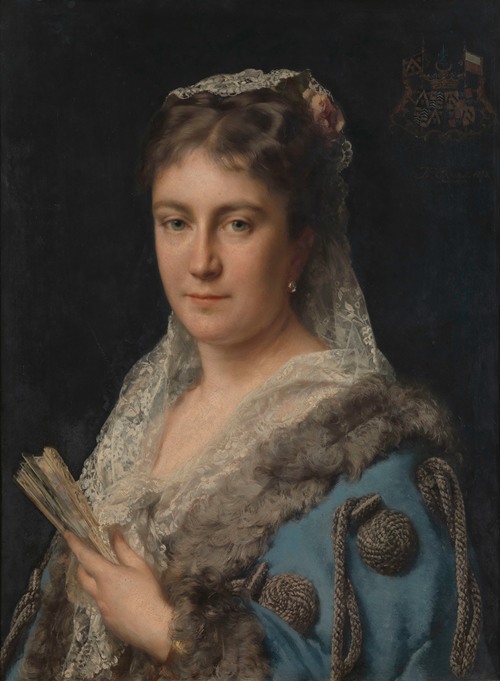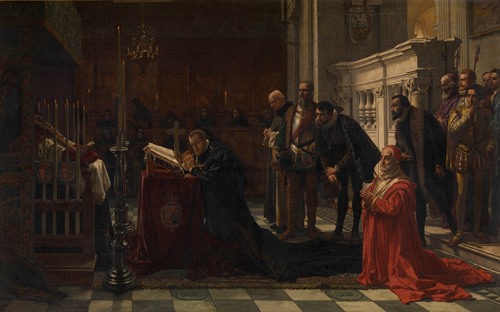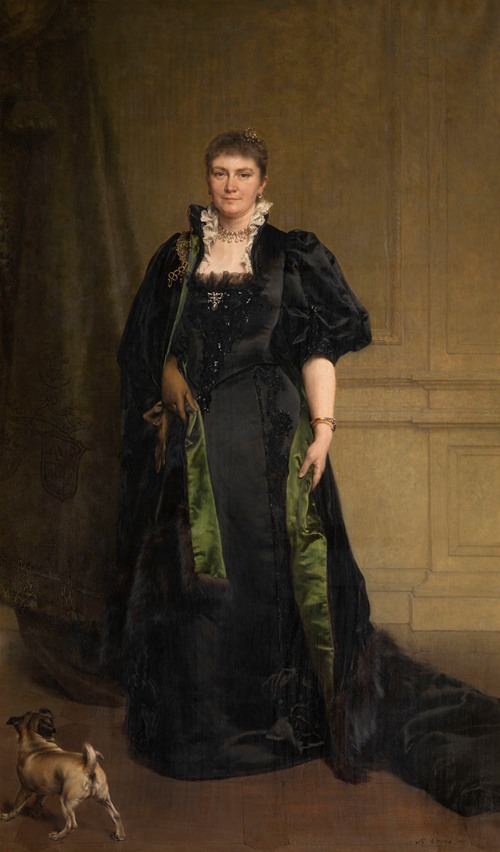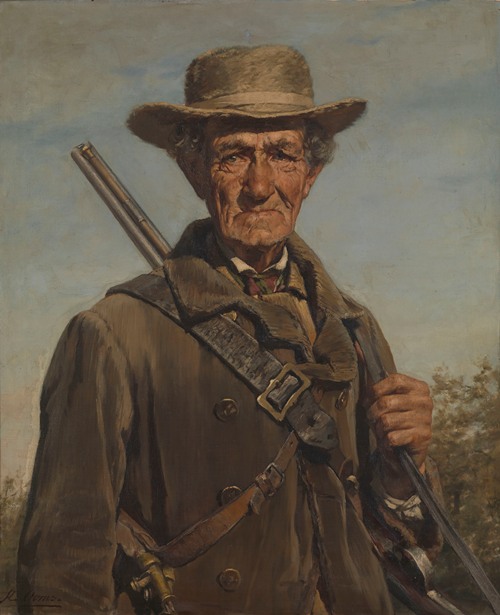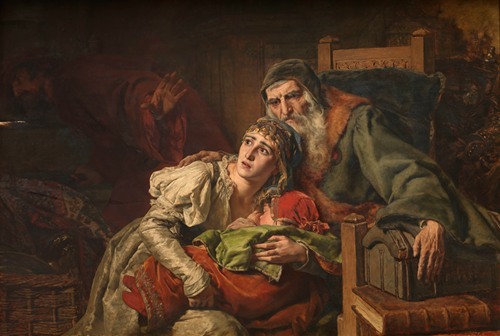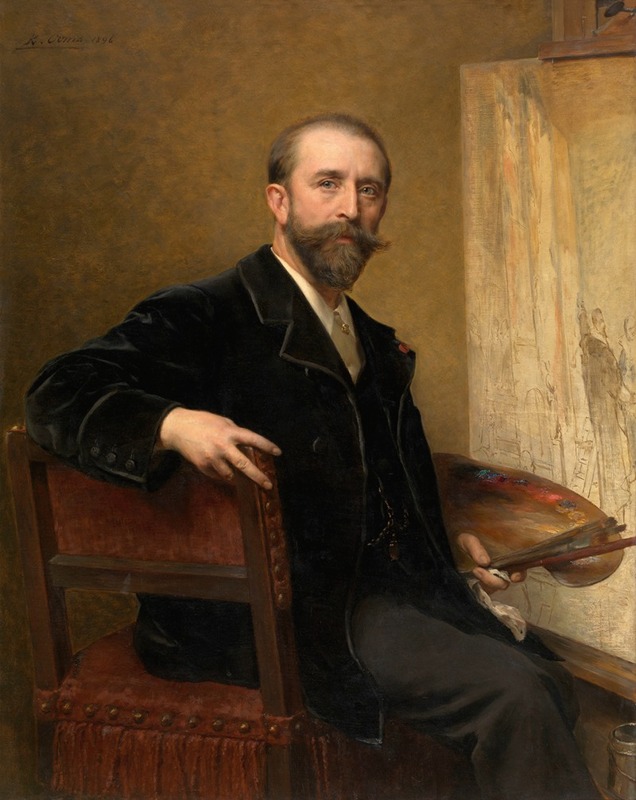
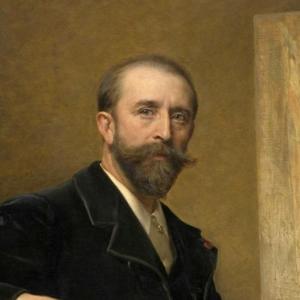
Karel Ooms was a Belgian painter of portraits, genre paintings and history paintings. He was also known for his Orientalist scenes and Oriental landscapes.
Karel Ooms was born in Dessel as the youngest son of a large peasant family. At school his extraordinary talent for drawing was discovered. When he was twelve his hometown provided financial support which allowed him to study at the Antwerp Academy of Fine Arts.
One of his teachers at the Academy was Nicaise de Keyser, one of the key figures in the Belgian Romantic-historical school of painting and a painter of mainly history paintings and portraits. After graduating from the Academy 1865 Karel Ooms was welcomed with pomp in his home town Dessel. He painted two altar pieces for the local church Saint Nicolas, to express his gratitude to his city.
Karel Ooms settled as an independent artist in Antwerp around 1871. He quickly established a reputation as a portrait painter. In addition, he received commissions for religious paintings and history paintings. He gained particular recognition with two large paintings, which he made for the criminal courtroom of the Antwerp Courthouse. His renown extended across the borders as Karel Ooms won awards for his oeuvre in Prague (1877), Amsterdam (1883), Adelaide (1887), Melbourne (1888), and Chicago (1893).
Karel Ooms made many travels in Europe and the Middle East. His travels to Palestine and Egypt are documented through the landscape paintings he made on location. In the Middle East, he found abundant inspiration for his Orientalist paintings.
Late in life, in 1897, he married Baroness Edith van Eersel, widow of Baron Emile della Faille, a member of a prominent Belgian aristocratic family. His wife was well-off and an avid art lover and collector. Soon after their marriage, the couple went to live in Edith's villa in Cannes so that Ooms, who suffered from a heart condition, could spend the winter months in a milder climate. However, he died at the age of 55 in Cannes as a result of stress following a nighttime break-in into his Cannes home. His remains were transferred to Antwerp and interred at the Moretus cemetery in Wilrijk.

